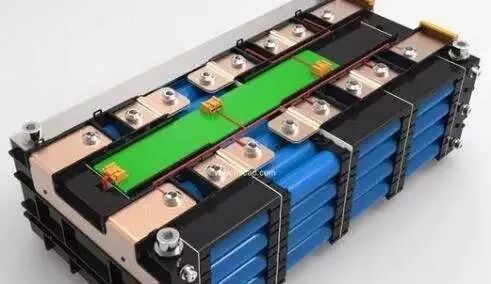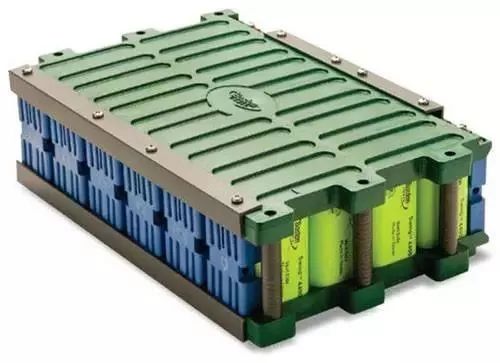Lithium iron phosphate battery
Aug,02,24
Lithium batteries with positive and negative electrode materials can be further divided into: lithium cobalt oxide (LiCoO2) batteries,
lithium manganese oxide (LiMn2O4) batteries, nickel cobalt lithium manganese oxide batteries, and lithium iron phosphate batteries.
In Sony's first lithium battery, the positive electrode material was lithium cobalt oxide and the negative electrode material was carbon.
Among them, the main factor determining the maximum rechargeable capacity and open circuit voltage of the battery is the positive electrode material.
Lithium iron phosphate battery refers to a lithium battery that uses lithium iron phosphate as the positive electrode material.
There are many types of positive electrode materials for lithium batteries, mainly including lithium cobalt oxide, lithium manganese oxide,
lithium nickel oxide, ternary materials, lithium iron phosphate, etc.
Lithium cobalt oxide is currently the majority of positive electrode materials used in lithium batteries,
while other positive electrode materials have not been mass-produced in the market due to various reasons.
Lithium iron phosphate is also one type of lithium battery.
In terms of material principles, lithium iron phosphate is also an intercalation/deintercalation process,
which is completely the same as lithium cobalt oxide and lithium manganese oxide.
Lithium iron phosphate batteries are used to make lithium secondary batteries, and now the main direction is power batteries, which have great advantages over NI-MH and Ni Cd batteries.

Characteristics of lithium iron phosphate batteries:
1. Ultra long lifespan
The cycle life of long-life lead-acid batteries is around 300 times, with a maximum of only 500 times,
while lithium iron phosphate power batteries have a cycle life of over 2000 times and can be used up to 2000 times on standard charging (5-hour rate).
Lead acid batteries of the same quality are "new for six months, old for six months, and maintained for another six months", with a maximum time of 1-1.5 years,
while lithium iron phosphate batteries can be used for 7-8 years under the same conditions.
Overall, the cost performance ratio will be more than four times that of lead-acid batteries.
2. Use safety
It is understood that lithium iron phosphate completely solves the safety hazards of lithium cobalt oxide and lithium manganese oxide.
Lithium cobalt oxide and lithium manganese oxide can cause explosions under strong collisions, posing a threat to consumers' life safety.
However, lithium iron phosphate has undergone strict safety testing and will not cause explosions even in the worst traffic accidents.
It can charge and discharge quickly with a high current of 2C.
With a dedicated charger, the battery can be fully charged within 40 minutes at 1.5C, and the starting current can reach 2C.
However, lead-acid batteries currently do not have this performance.
3. High temperature resistance
The peak temperature of lithium iron phosphate can reach 350 ℃ -500 ℃, while lithium manganese oxide and lithium cobalt oxide are only around 200 ℃.
The working temperature range is wide (-20C -+75C), and it has high temperature resistance.
The electric heating peak of lithium iron phosphate can reach 350 ℃ -500 ℃, while lithium manganese oxide and lithium cobalt oxide are only around 200 ℃.
4. Capacity
It has a larger capacity than ordinary batteries such as lead-acid batteries.
Rechargeable batteries often operate under conditions of being fully charged but not fully discharged, and their capacity quickly drops below the rated capacity value.
This phenomenon is called the memory effect.
Nickel metal hydride and nickel cadmium batteries have memory retention, while lithium iron phosphate batteries do not have this phenomenon.
The battery can be charged and used as needed regardless of its state, without the need to discharge it before charging.
The volume of a lithium iron phosphate battery with the same specification capacity is 2/3 of the volume of a lead-acid battery, and the weight is 1/3 of a lead-acid battery.
This battery does not contain any heavy metals or rare metals (nickel hydrogen batteries require rare metals), is non-toxic (SGS certified), pollution-free,
and complies with European RoHS regulations, making it an absolute green and environmentally friendly battery certificate.
5. No memory effect
The performance of lithium power batteries mainly depends on the positive and negative electrode materials.
Lithium iron phosphate as a lithium battery material has only emerged in recent years,
and the development of high-capacity lithium iron phosphate batteries in China began in July 2005.
Its safety performance and cycle life are incomparable to other materials, which are also the most important technical indicators of power batteries.
The cycle life of 1C charging and discharging reaches 2000 times.
A single battery with an overcharge voltage of 30V does not burn or explode when punctured.
Lithium iron phosphate cathode material makes high-capacity lithium batteries easier to use in series.
To meet the frequent charging and discharging needs of electric vehicles.
It is an ideal positive electrode material for the new generation of lithium batteries due to its non-toxic,
pollution-free, good safety performance, wide source of raw materials, low price, and long lifespan.
The positive electrode of a lithium battery is made of lithium iron phosphate material.
This new material is not LiCoO2, the traditional positive electrode material for lithium batteries; LiMn2O4;LiNiMO2。
Its safety performance and cycle life are incomparable to other materials, which are also the most important technical indicators of power batteries.
The cycle life of 1C charging and discharging reaches 2000 times.
A single battery with an overcharge voltage of 30V does not burn or explode. Puncture does not explode.
Lithium iron phosphate cathode material makes it easier to use in series for high-capacity lithium batteries.
Lithium iron phosphate batteries also have their drawbacks: for example, the tap density of lithium iron phosphate cathode materials is relatively small,
and the volume of lithium iron phosphate batteries with equal capacity is larger than that of lithium cobalt oxide batteries, so they do not have advantages in micro batteries.

In the post industrial era, the popularity of automobiles has greatly exceeded our imagination.
While bringing efficiency and convenience, the large amount of exhaust emissions has also added great pressure to the environment.
With the soaring oil prices and the greenhouse effect caused by carbon dioxide emissions, there is an urgent need to find new energy sources to replace traditional energy.
Liquid hydrogen, fuel cells, etc. are good choices, but there are problems such as high price and immature technology.
Ordinary lead-acid batteries have relatively low operating costs, but they are heavy, have low energy density, short service life, and potential heavy metal pollution.
The new generation of electric vehicles uses a new type of lithium iron phosphate battery as its power core.
This green and environmentally friendly power has many characteristics and advantages:
1. The security is quite high
As a power source for automobiles, safety is the paramount consideration.
Although the safety of ordinary lithium batteries can be basically guaranteed, there is a possibility of fire and explosion under extreme conditions.
As a second-generation product of lithium batteries,
lithium iron phosphate batteries have stable physical properties and are equipped with built-in protection functions such as overvoltage, undervoltage, overcurrent,
and overcharge in the battery pack. They do not explode or catch fire, making them the only absolutely safe lithium-ion battery in the world.
Due to the use of high thermal stability materials and meticulous process design, battery safety and reliability are greatly enhanced.
Compared to the explosion phenomenon that may occur during improper use of lithium batteries, lithium iron phosphate batteries will not explode even if thrown into fire.
The high temperature stability can reach 400-500 ° C, ensuring the inherent high safety of the battery;
It will not explode or burn due to overcharging, high temperature, short circuit, or impact.
After rigorous safety testing, even in the worst traffic accidents, explosions will not occur.
2. Long lifespan and low cost
As a power battery, the service life (cycle performance) is closely related to the overall usage cost.
Compared with the normal lithium battery's cycle life of about 500 times,
the lithium iron phosphate battery can be charged and discharged 1500 times at room temperature, with a capacity retention rate of over 95%.
The cycle life of 50% capacity is even more than 2000 times.
The continuous mileage of the battery is over 500000 kilometers, and it can be used for about five years,
which is 8 times that of lead-acid batteries, 3 times that of nickel hydrogen batteries, and about 4 times that of lithium cobalt oxide batteries.
In addition, its production and manufacturing costs are already lower than ordinary lithium batteries,
undoubtedly greatly reducing the usage and maintenance costs of electric vehicles.
At the same time, the discharge performance of lithium iron phosphate batteries is also very excellent, with a stable power curve and strong resistance to over discharge.
Ordinary lithium battery cells are over discharged after being below 3.2V, which may lead to scrap.
However, lithium iron phosphate batteries still release energy at 2.8V, and there is no problem of scrapping below 2.5V.
3. Easy to use and handle
We know that nickel hydrogen and nickel cadmium batteries have strong memory effects, and ordinary lithium batteries also have certain memory effect problems.
They need to be fully charged and discharged as much as possible, which will bring inconvenience to the daily use of electric vehicles.
However, lithium iron phosphate batteries do not have this phenomenon and have small self discharge;
No memory effect, the battery can be charged and used at any time regardless of its state, without the need to discharge it before charging.
At the same time, the battery has excellent fast charging characteristics, and can be fully charged with a dedicated charger in about 95% in half an hour.
The issue of disposal after the end of battery life is also worth our attention.
Lithium iron phosphate batteries do not contain any heavy metals or rare metals, are non-toxic, pollution-free, and comply with regulations.
They are absolutely green and environmentally friendly batteries.
Lead acid batteries contain a large amount of lead, and if not properly disposed of after disposal, it will cause secondary pollution to the environment.
However, lithium iron phosphate materials are pollution-free in both production and use.






